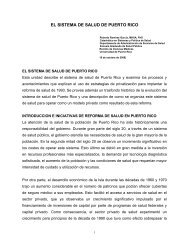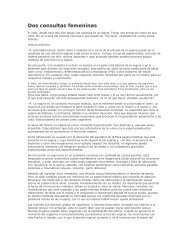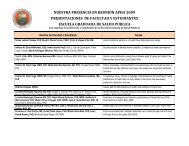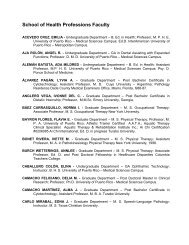CHILD SEXUAL ABUSE AND ADULT SEXUAL REVICTIMIZATION
CHILD SEXUAL ABUSE AND ADULT SEXUAL REVICTIMIZATION
CHILD SEXUAL ABUSE AND ADULT SEXUAL REVICTIMIZATION
Create successful ePaper yourself
Turn your PDF publications into a flip-book with our unique Google optimized e-Paper software.
Therefore, data on the prevalence rates or possible mediating factors that<br />
may be specific to sexual revictimization among men are lacking. Because<br />
the factors associated with the sexual assault of men in adulthood may be<br />
different from those of women, it isnot clear whether findings that pertain to<br />
populations of women are generalizableto men.<br />
Probability Studies<br />
REVIEWED SAMPLES<br />
We identified three studies that used a sophisticated research design to<br />
obtain large nationally representative samples (Kilpatrick et a1., 1997; Koss<br />
& Dinero, 1989; Tjaden & Thoennes, 2000). One study used a sampling<br />
procedure that surveyed a representative sample of college students in the<br />
United States, and the others used random-digit dialing methods to recruit<br />
and interview a representative sample of adults in the United States.<br />
The first study, conducted by Koss and Dinero (1989), inyestigated the<br />
incidence of sexual assault among college women and examined a number of<br />
proposed mediating variables associated with interpersonal victimization. The<br />
researchers used enrollment data for all U.S. colleges and sorted the colleges<br />
into geographical regions by proximity to metropolitan areas, ethnic enrollment,<br />
type of institutions, and size of the student population. Of the 92 schools<br />
that were contacted, 32 agreed to participate, resulting in a total of 3,187<br />
college women who completed the study.<br />
Anonymous questionnaires were administered that assessed sexual victimization<br />
experiences and three sets of potential mediating variables: (a)<br />
potential vulnerability-creating traumatic experiences (e.g., divorce, physical<br />
abuse, domestic violence), (b) social-psychological characteristics (e.g.,<br />
personality traits and attitudes), and (c) vulnerability-enhancing situation<br />
variables (e.g., alcohol use, number of sexual partners). CSA was defined as<br />
experiences ranging from exhibitionism to rape that occurred before the age<br />
of 14 (Finkelhor, 1979). ASA included experiences ranging from sexual contact<br />
to rape that occurred after the age of 14 (Koss & Oros, 1982).<br />
Findings indicated a significant relationship between CSA and ASA.<br />
Specifically, 66% of the adult rape victims had a history of CSA, compared<br />
with only 20% of the women with no history of adult victimization. Therefore,<br />
adult victims were over three times more likely to have a history of<br />
CSA compared with adult nonvictims. Analyses did not include an examination<br />
of differences based on racial or ethnic differences. Several variables<br />
were found to effectively differentiate rape victims and nonvictims, including<br />
CSA, sexual attitudes, level of sexual activity, and alcohol use.<br />
Strengths of this study included a large representative sample of college<br />
women and the exploration of a large number of predictor variables that<br />
CHIW <strong>SEXUAL</strong> <strong>ABUSE</strong> <strong>AND</strong> <strong>ADULT</strong> <strong>SEXUAL</strong> <strong>REVICTIMIZATION</strong> 53









